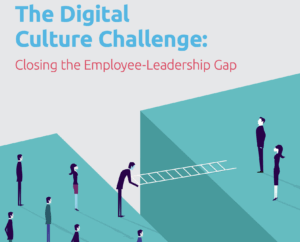
Guest post by Ekaterina Walter, a social media strategist at Intel. She was recently elected to serve on the Board of Directors of Word of Mouth Marketing Association (WOMMA). Follow her on Twitter
Culture is one of the largest components of how we communicate: not just how we say something but how we choose the tools we use to get a message across. This is as true for social media as it was for the telegraph.
For example, if you want to reach a Latino audience, going all out on a broad social media strategy isn’t going work. Only about two-thirds of Latinos reported going online in 2010, according to a 2010 Pew study. The same report shows that while Latinos are no more likely than whites to use a phone for internet access, six percent of Latinos use internet-enabled phones without having a home internet connection, compared to just one percent of whites. These numbers mean a lot for choosing how to connect with Latino audiences: mobile is far more important than in other communities.
The Culture Factor
Many of the numbers associated with race and social media — or internet usage in general — blur when you start considering how groups of the same socioeconomic levels but of different races compare. But certain trends, like the mobile usage in Latino communities, create spikes that can impact how you might plan a social media campaign.
There are also cultural factors that go much deeper than how a particular group accesses the web and which social media tools they choose. When you plan a campaign, you need to take as much demographic information into consideration as possible. Consider the 2010 U.S. Census results for the geographic distribution of the black population: 55 percent of the population lives in the South. But there are interesting clusters all over the country that can impact the content of the social media locals use. There is a growing community of Somali immigrants in Denver, for instance, as well as in other Colorado towns. The profile of this cultural group, while included in the Census as ‘Black’ is very different from African-American populations in cities like Atlanta. Their online activity starts in community centers like the East Africa Community Center in Greeley, with a much higher emphasis on job skills and using computers as a tool. Reaching them online requires a more targeted approach.
Wherever possible, it’s important to dig deeper than just the broadest strokes painted by demographics. Knowing numbers isn’t the same as knowing the community you’re trying to reach. You may not always have the resources to spend time with members of the audience you’re trying to reach through social media, but without even the basic insights of what tools that audience uses to communicate, you aren’t going to be able to effectively reach them.
Beyond Our Borders
This is just a picture of social media in the U.S. The moment you think about crossing international borders, the social media picture changes dramatically. One of the largest social networking sites in the world, Qzone, has an estimated 480 million users, the majority of whom live in China. The differences in how users interact with sites could greatly hamper certain websites on a fundamental basis. Take a moment to reflect on the ‘nymwars’ affair experienced by Google when the company required users to sign up for Google+ using their actual names. There was an uproar — but nothing like what the company would have faced if it had focused its launch in a country like Japan. Anonymity is the norm for social media users in that country — most use avatars and nicknames on social networks, because of privacy concerns and cultural norms.
There are many international users on the social media sites you may rely on — but they may use those same tools in very different ways. Different countries and cultures may have different concerns about sharing too much information online or different laws about how they can legally do business online. Studying the cultures behind the users on different social networking sites can require thinking about the way those sites work in ways you’ve never imagined.
How we get online is as important as why
But it’s not just a question of what sites users in other countries may access or what they do there: there are fundamental differences in how we get online. In Africa, there isn’t the type of infrastructure available to use computers on the scale that we see in the U.S. Instead, mobile is the main method of accessing the internet.
Conclusion
As you’re developing a social media campaign (or even just interacting with someone from a different cultural background online), it’s crucial to consider the specific audience you’re talking to. You need to not only know the demographic data, but what that information means in terms of how they use the internet.
Photo Credit: Shutterstock





This is a really nice blog post. I like the way you talked about the process of starting a social media campaign, but it is also true that if you start one you already know what to do. In these days people can’t waste their time acting in a stupid way, most of them (if they know the internet very well) study what they must do before doing it.
Smart post. Besides location/methods, the content itself needs to be considered. Brazilians, for example, do not take kindly to translations–Paul Gollash (Voxy) found that it was necessary to hire native copywriters in Brazil, but not in India or China, where audiences expected translated content.
Cheers!
Cheers
Look forward to reading more on this topic! thanks
Not so much internationally but culturally I have seen the impact first hand. Our high school reunion, which used to be, you don’t see or hear from people for years was organized on Facebook and only people Alumni on FB were invited. When we got there, no one had anything new to talk about. Most conversations were about pictures that everyone had see from a wedding or a baby on FB. It was sad really and elitist in the worst way because the people who weren’t on FB had every right to attend but were excluded out of convenience.
I’d
I’d like to see a follow-up with a more in-depth investigation of what does “good” look like for some of the mentioned cultures and countries. Great article & I agree that more time and thought should be invested into planning campaigns that cross different cultures/regions.
This is absolutely true. Indeed social marketing must consider diversity of cultures.
Different cultures have different behaviors. We should learn from each other and respect each other
The culture you were born into isn’t relevant unless you are doing “averaging”.
Our “real” culture is an aggregate of our reactions to “things”. One person in Mexico calls a Ferrari “beautiful”…while a person in the U.S. calls it “excessive” while someone in Malaysia calls it “beautiful”. The individuals in Malaysia and Mexico have a cultural “similarity”.Expand this to other categories – like reactions to architecture, beverages, watches, art, music. Then, the aggregate of these reactions paints a cultural profile that links to people who share similar reactions. My closest cultural peer might be someone who looks and speaks very differently than me.
With the reach that the internet has generally, it is important to bear in mind the fact that you are likely to be dealing with people from other cultures on many websites—not just social media. It is also important to take note of the subcultures that form on social media, which often cross international borders through their shared interests. Niche groups like that can be very open to having the right products marketed to them on Facebook.
Their online activity starts in community centers like the East Africa Community Center
in Greeley, with a much higher emphasis on job skills and using
computers as a tool. Reaching them online requires a more targeted
approach.
it’s crucial to consider the specific audience you’re talking to. You
need to not only know the demographic data, but what that information
means in terms of how they use the internet.
Yu aren’t going to be able to effectively reach them.
Many of the numbers associated with race and social media — or internet
usage in general — blur when you start considering how groups of the
same socioeconomic levels but of different races compare.